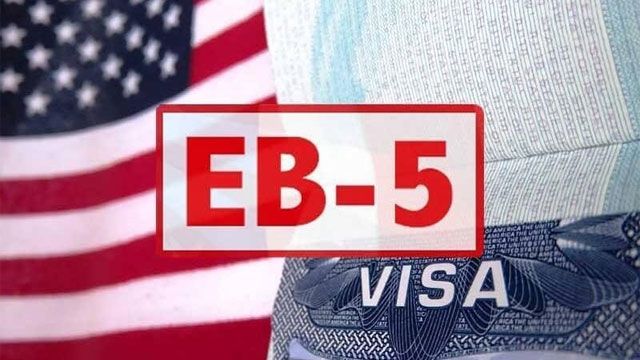How to Sell Franchises Using the EB-5 Program

Luckily, the U.S. government has created programs to allow foreign investors to invest in a business in the U.S. and use this investment as an opportunity to earn citizenship. This model has worked exceptionally well in franchising for several brands. Think of Subway….7-11….many of the gas station franchise brands and others have used this model to market effectively to foreign countries using the EB-5 investment vehicle.
Like most of us who immigrated here to the U.S. (virtually everyone), we tended to follow the lead of the people who came before us – the same is true with franchising and the EB-5 program when the franchise brand succeeds within a particular franchise brand, the growth, interest and continued franchise investments from that country tend to increase dramatically.
WHAT IS EB-5?
EB-5 refers to “Employment-based fifth preference,” which is a category of immigrant visa classification based on employment creation, under section 203(b)(5) of the Immigration and Nationality Act. The fifth preference refers to the numerical quotas that apply to most employment-based immigrant visas.
EB-5 law requires a foreign applicant to demonstrate that he or she is investing $1,000,000 USD in a “new commercial enterprise” that will create a minimum of ten (10) jobs for U.S. workers. If the new commercial enterprise (and thus the jobs) will be in the “targeted employment area,” then the threshold investment amount is only $500,000.
A “targeted employment area” is a rural area (a geographic boundary outside a metropolitan area, with a population of 20,000 or less) or a political or geographic subdivision that has suffered at least 150% of the federal unemployment rate for the preceding twelve (12) months.
In addition to proving the job creation and investment in a new commercial enterprise, the foreign applicant will need to demonstrate that the investment funds were acquired legally. The foreign national must also prove that he or she is “admissible” as an immigrant to the U.S.
WHAT IS A REGIONAL CENTER?
In 1990 the United States Congress enacted legislation that created a pilot program for foreign investment in “regional centers.” A “regional center” is a business entity, public or private, that has received regional center designation by the United States Citizenship and Immigration Services (“USCIS”).
This means that the regional center has proven that investments in projects under its regional center designation will promote economic growth within its geographic parameters. In addition, a regional center, unlike a “stand-alone” EB-5 project, can prove job creation through econometric analysis and may include indirect and induced jobs in the calculation.
This is a significant advantage because foreign investors in a regional center project do not need to worry about hiring people or showing that they themselves have hired ten U.S. workers.
Other advantages to investing in a regional center project (as opposed to a “stand-alone” investment) are:
- It allows many foreign investors to “pool” their funds in large capital projects;
- The foreign investor does not have to actually run the business;
- The foreign investor does not have to live near the project he/she has invested in;
- Reporting and job creation requirements are handled by the regional center administrators.
WHAT KINDS OF PROJECTS LEND THEMSELVES TO EB-5 FINANCING?
Some businesses are particularly well-suited to receive EB-5 financing, because of the types and numbers of jobs they require and because of their financing structure. These include
- Restaurants;
- Certain franchises;
- Incubation and loan program with wholly-owned subsidiaries;
- Real estate development with property ownership and management;
- Mixed-use commercial/residential developments;
- Shopping centers;
- Health services (hospitals, assisted living facilities);
- Hotels; hospitality;
- Biotechnology;
- Media software and development;
- Large residential developments, including single-family homes and condominiums;
- Theme parks;
- Personal services (spas, health clubs);
- Certain agricultural uses;
- Manufacturing;
- Schools;
- Public works projects and infrastructure;
- Logistics and warehousing;
- Importing and distribution;
- Investment banking.
The above list is by no means exhaustive.
HOW CAN A PROJECT RECEIVE EB-5 FUNDING?
In order for a large capital project to be eligible to accept EB-5 financing, it must be associated with an approved EB-5 Regional Center. A project developer may apply for its own Regional Center designation; however, this is a long and expensive proposition that takes a minimum of twelve months and has no guarantee of being approved. Often, a more viable solution is to become associated with an existing Regional Center as a business affiliate, for a fee.
Either way, the project will need to put together a proposal, which will consist of the following:
– Comprehensive business plan that complies with EB-5 policy and regulations and includes a marketing plan;
– Operational plan;
– Economic Analysis.
– Offering documents
The above should be prepared by experienced professionals to ensure proper compliance with EB-5 and securities regulations.
Once the project developer has completed the above, he/she can begin marketing the project to potential investors. This is normally done using the services of overseas agents.
From my experience working with EB-5 Franchise Buyers, we recommend a qualified attorney or counsel who has experience in this particular segment of work.
For more information on how to sell franchises using the EB-5 program, contact us.
- How does the Stark Law work in Franchise Business Models: Legal Considerations and Compliance - January 25, 2024
- Jollibee Franchise: A Flavorful Journey Through History - January 25, 2024
- How Franchisors Tackle Daily Challenges in Business Management - January 23, 2024

